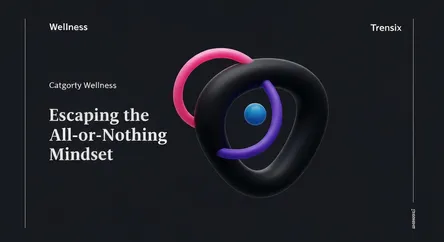Wellness
Escaping the All-or-Nothing Mindset

Learn about black-and-white thinking, a cognitive distortion that views life in extremes, and how it impacts your mental well-being.
What is it?
Black-and-white thinking, also known as dichotomous or all-or-nothing thinking, is a cognitive distortion that causes people to see the world in absolutes. This thought pattern categorizes experiences into two extremes—such as good or bad, success or failure—without acknowledging any middle ground or shades of gray. Instead of seeing the nuances in a situation, this mindset simplifies complex realities into polarized opposites. For example, believing that if you aren't a complete success, you must be an utter failure is a classic sign of this rigid way of thinking.
Why is it trending?
The focus on mental health and mindfulness has brought greater awareness to unhelpful thought patterns like black-and-white thinking. It is frequently discussed in relation to managing anxiety, depression, and perfectionism, as this mindset can worsen these conditions. In an increasingly complex and uncertain world, the appeal of simple, absolute answers can be strong, leading more people to adopt this cognitive shortcut. As a result, wellness experts and therapists are highlighting the importance of identifying and overcoming this distortion to foster mental resilience and flexibility.
How does it affect people?
This rigid mindset can negatively impact many areas of life. It can harm relationships by making compromise difficult and leading to incorrect judgments about others. Constant self-evaluation in extreme terms can lead to poor self-esteem, anxiety, and a persistent fear of failure. This thinking style hinders personal growth by preventing learning from mistakes and can sabotage career goals by fostering a fear of trying new things. It is also associated with several mental health conditions, including depression and personality disorders.